BUDGET DIVING IN AMBON AND THE BANDA ISLANDS by Andrew Falconer
Ambon and the Banda Islands are in Maluku Province of Indonesia, which is in the east of the archipelago. The Moluccas as they were known in colonial times were famous as the source of rare valuable spices, and were fought over by the Portuguese, Dutch and English over a period of three centuries. This history was often bloody and had consequences for the local inhabitants, especially in the Banda Islands, which were the only known source of nutmeg at the time.
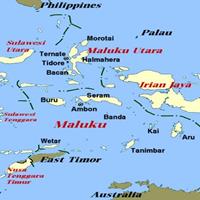 |
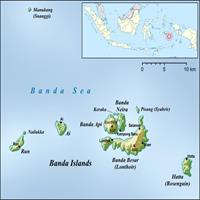 |
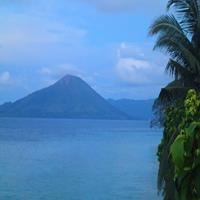 |
There are several cheap daily flights to Ambon from Bali with Lion Air, although not direct (I flew via Surabaya and Makassar on the way there and via Makassar on the way back), and from Perth to Denpasar with Air Asia.
The diving in Ambon is conveniently located adjacent to the airport, where several dive shops operate, and there is cheap homestay accommodation. Ambon itself is on the other side of the bay, but is really just another Indonesian city, despite the attractive location.
By contrast the Banda islands require a taxi ride to the departure port for a twice weekly (Tuesdays and Saturdays / returning Wednesdays and Sundays) fast ferry service, which takes about 5 to 6 hours, but is reliable and comfortable. There are also some direct flights from the airport, which cost about the same, but are subject to weather and difficult to book. Finally there is the weekly government run Pelni ship option, which is very cheap but slow, and not too comfortable. The only transport on the islands is by walking or motorcycle, there are a number of reasonable but cheap places to stay, mostly on Banda Neira, where there are also a few cafes.
DIVING THE BANDA ISLANDS
The Banda islands are diveable most of the year except during the wet seasons which are generally January and June to August. There is only one dive shop on the islands, but this is a well German run operation called Blue Motion Diving www.dive-bluemotion.com
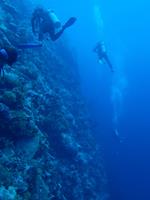 |
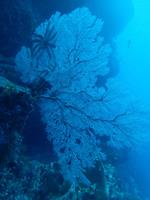 |
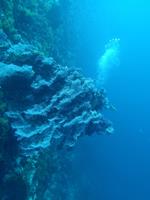 |
Diving is from the shop on Banda Neira by spacious boat and includes daily double dive trips (lunch included) to dive spots on all of the ten islands. The diving was generally similar, and featured excellent coral shelves and steep drop offs, which plunge to the very deep surrounding bed of the Banda Sea, one of the deepest in Indonesia. Visibility in February when I dived visibility was good and water temperature 27 degrees, which I was told was a reason for a distinct lack of pelagic fish on account of low nutrients. In October, when the water is cooler and visibility poorer, there are supposed to be more fish, including hammerhead sharks. However I could not help noticing the remains of fishing lines and the odd net snagged on the coral on most dives. Most dives were relaxing with a little current allowing a slow drift along the walls. One special dive of note was an early morning one at the lava flow, where there has been rapid coral regrowth following the 1988 eruption of Gunung Api, the spectacular volcano that dominates the skyline.
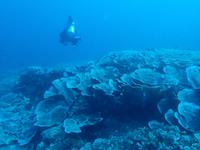 |
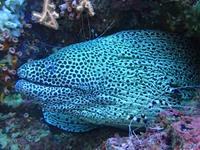 |
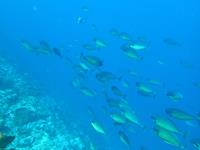 |
depth and silt on the bottom penetration should only done with extreme care.
The four cruisers lie at 90 degrees on their sides and are thus easier to recognise. Because all the ships are so large and relatively deep, it is impossible to see or cover the whole of any them on a single dive. Two dives per day are the norm. In the course of a week it is possible to dive all the wrecks at least once. All have been subjected to some partial salvage, and after nearly 100 years the cruisers in particular are starting to break up. Nevertheless they are still impressive. Because of the state of the wrecks, the visibility,
DIVING AT AMBON
The diving at Ambon around the Bay is completely different, being “muck” diving, plus one significant wreck, all located near the shore line, although there are other dive sites outside, accessible by boat. I dived with the sister shop of the one on the Banda Islands, also German run www.dive-bluemotion.com The owner is an interesting guy, who loves the night dives there especially. Most dives can be done directly from the shop, where despite a distressing amount of plastic in the water and the shore, depending on the tide, the visibility can be quite good, although most of the interest is close up so not really important.
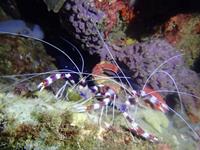 |
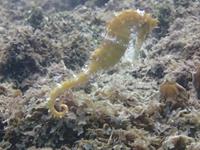 |
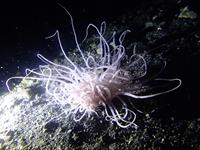 |
The “muck” diving at Ambon is comparable to that of the Lembeh strait, with many strange critters and sights, including the coral shrimp, sea horse and anemone above and the frogfish, “football” of juvenile catfish, and cuttlefish below
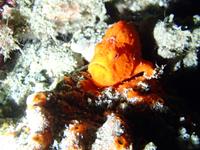 |
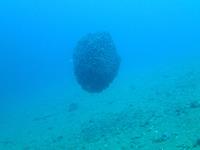 |
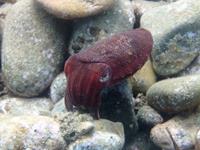 |
The wreck of the “Duke of Sparta” a 137m cargo ship sitting upright on the sloping shoreline of Ambon Bay with the stern and bow at about 15m and 35m respectively, hear the jetty where she was sunk in 1958 by the CIA during an attempt to suppress a communist uprising. Marked by a large red steel buoy, the descent to the wreck is down the buoy line to the stern to the heavily encrusted vessel, as shown in the photos below. Visibility is rather limited, and tide dependent.
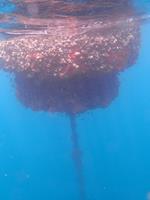 |
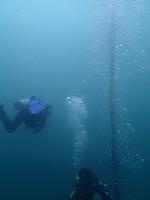 |
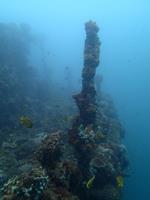 |
In conclusion diving in Ambon and the Banda Islands, when combined offers a lot of variety underwater, as well as interest above.
The approximate cost of my trip (own gear) was as follows:
Airfares (Australia to Bali return): $400
Airfares (Bali to Ambon return): $200
Fast ferry (Banda Islands return): $100
Ten boat dives (Banda): $400
Eight nights accommodation and meals (Banda): $300
Five dives (four shore one boat) Ambon: $150
Four nights accommodation and meals (Ambon): $150
Two nights accommodation (Bali): $100
Total: $1800
 South West of WA
South West of WA Ambon & Banda Islands
Ambon & Banda Islands